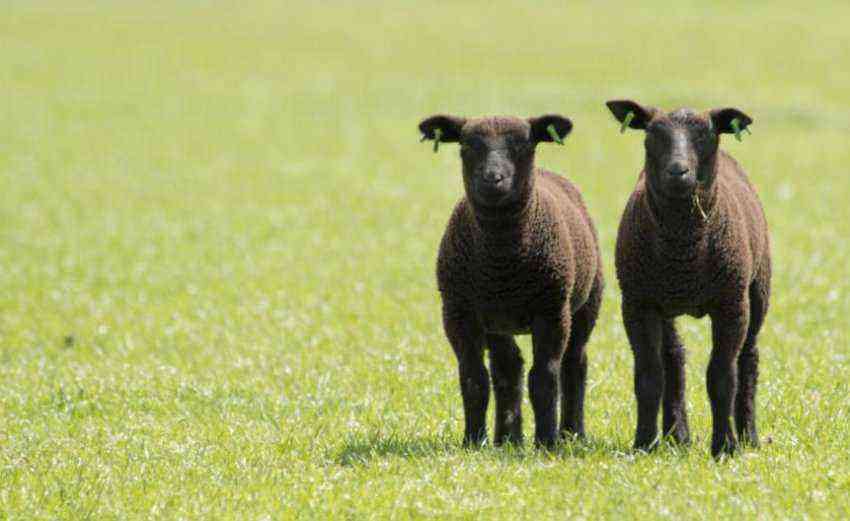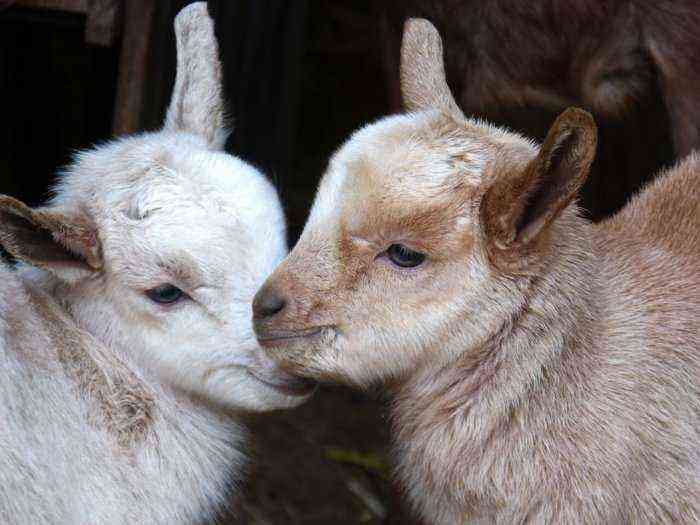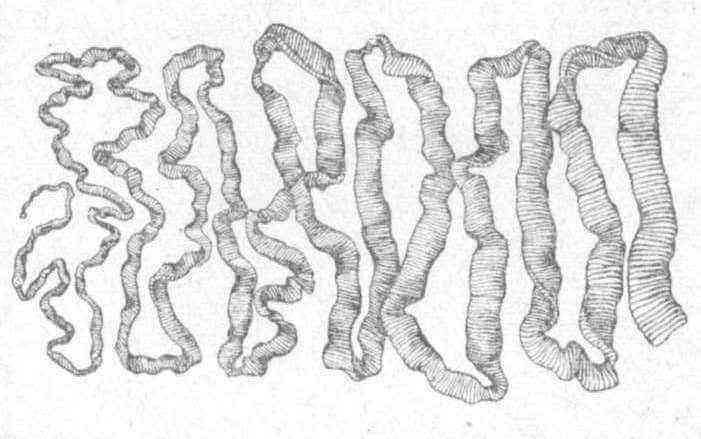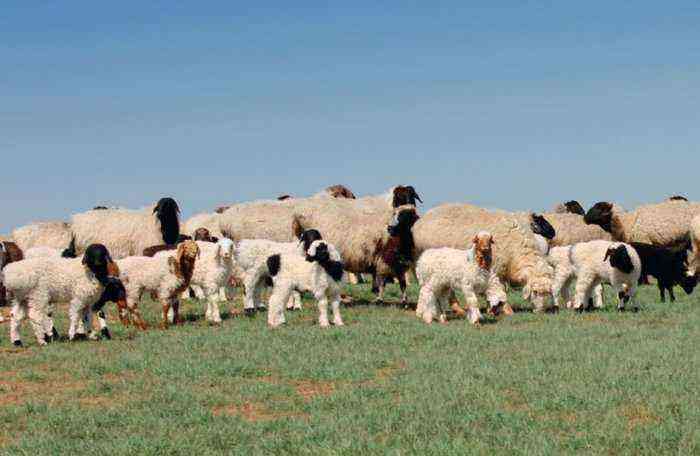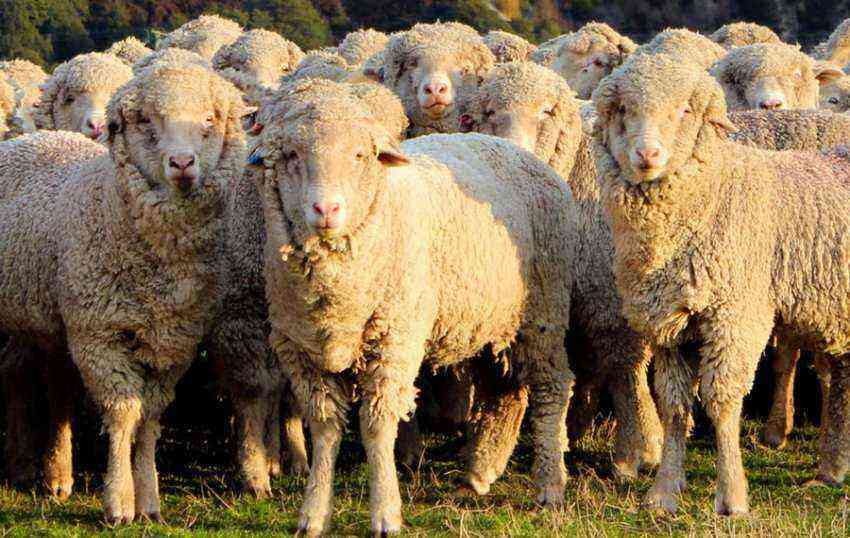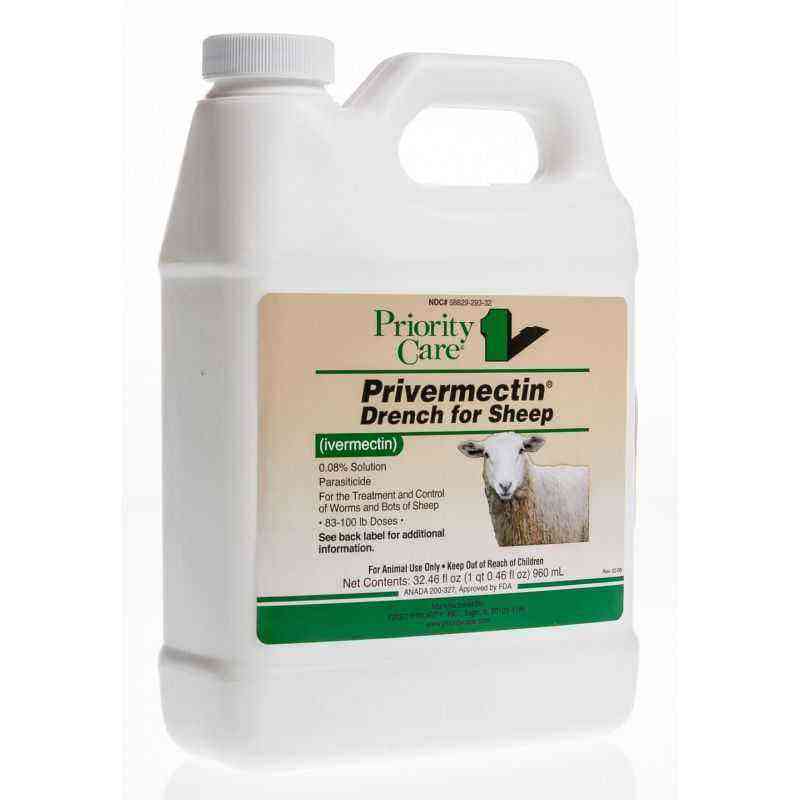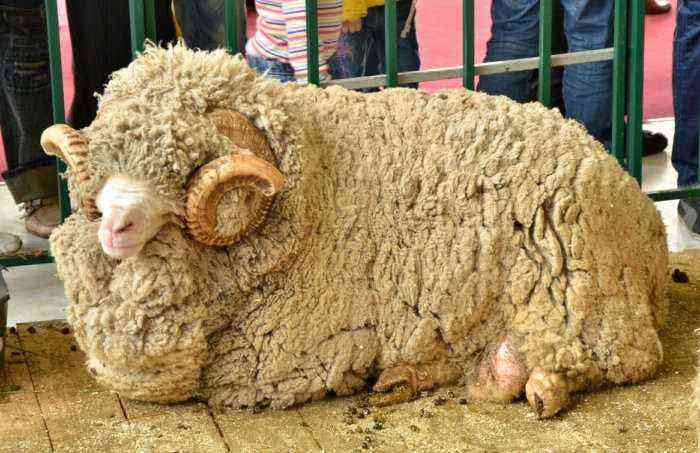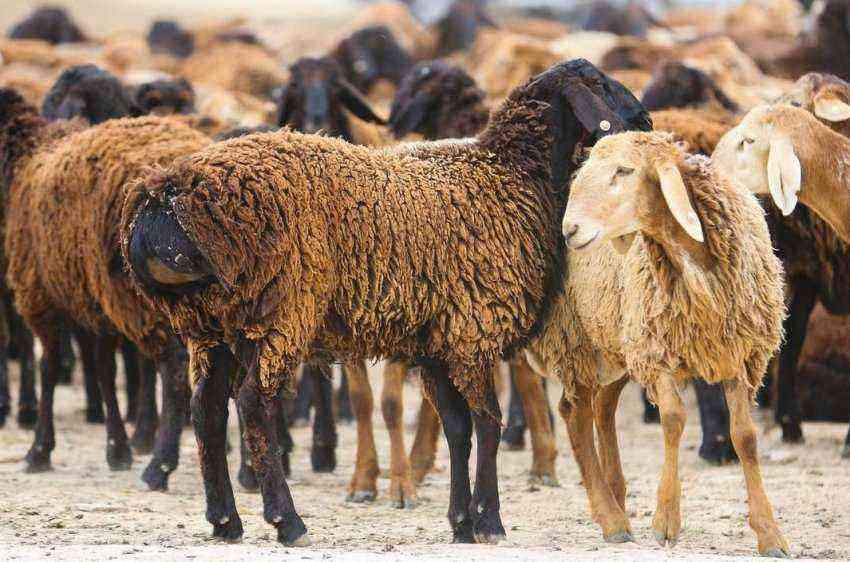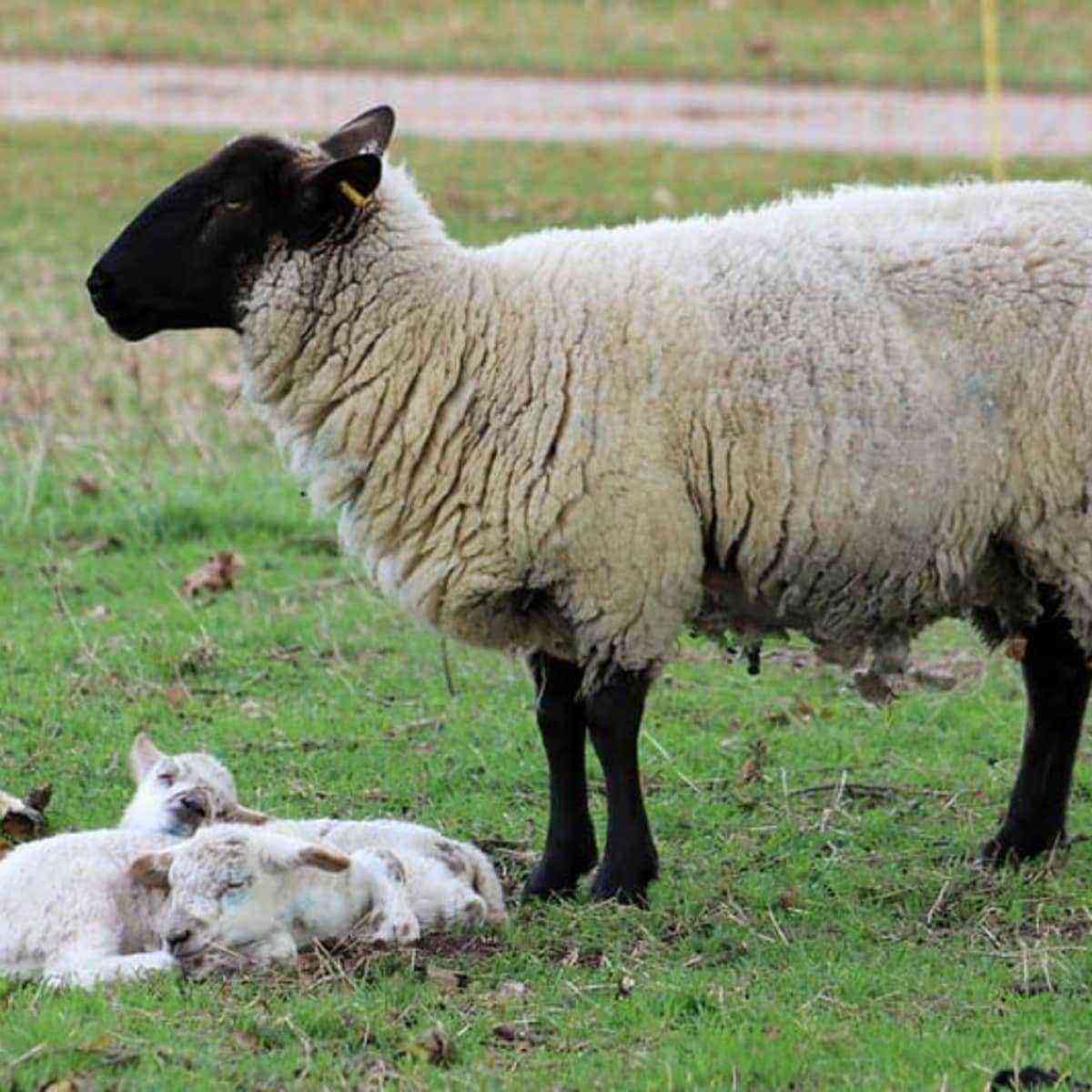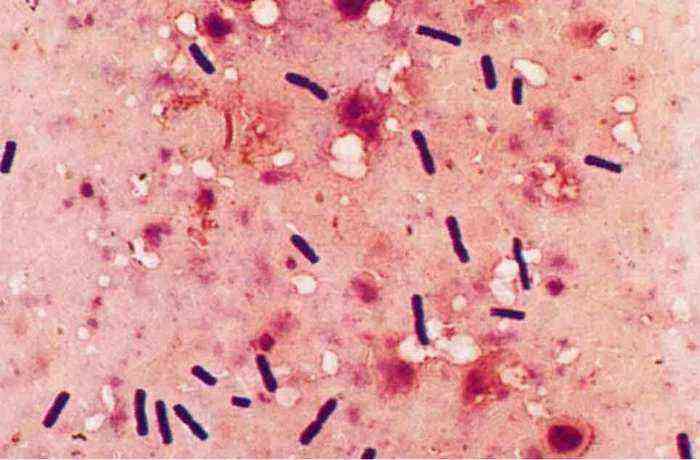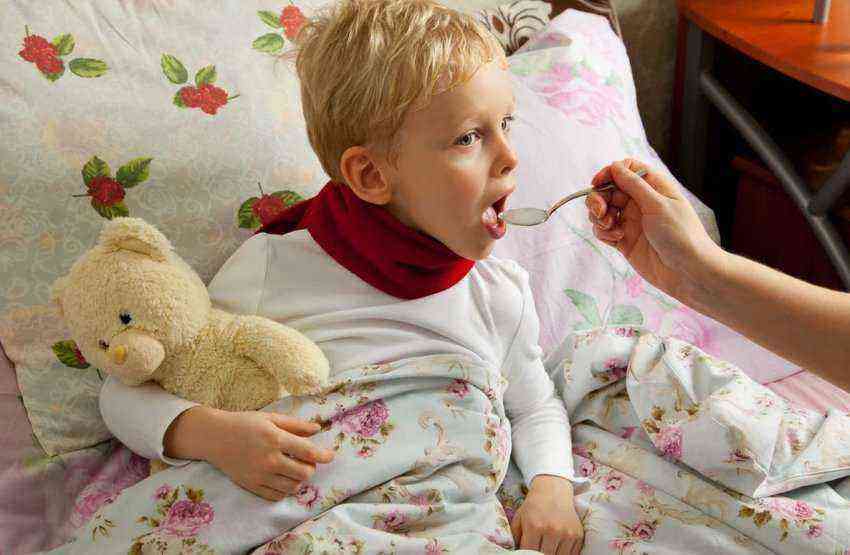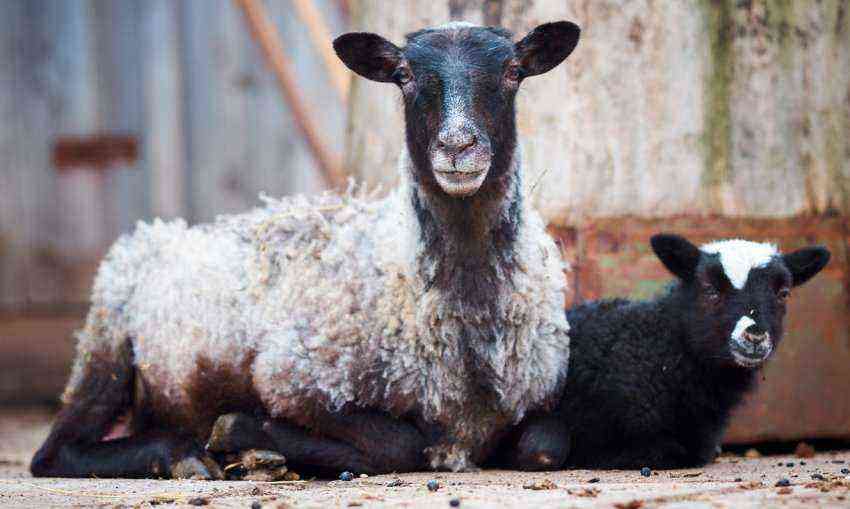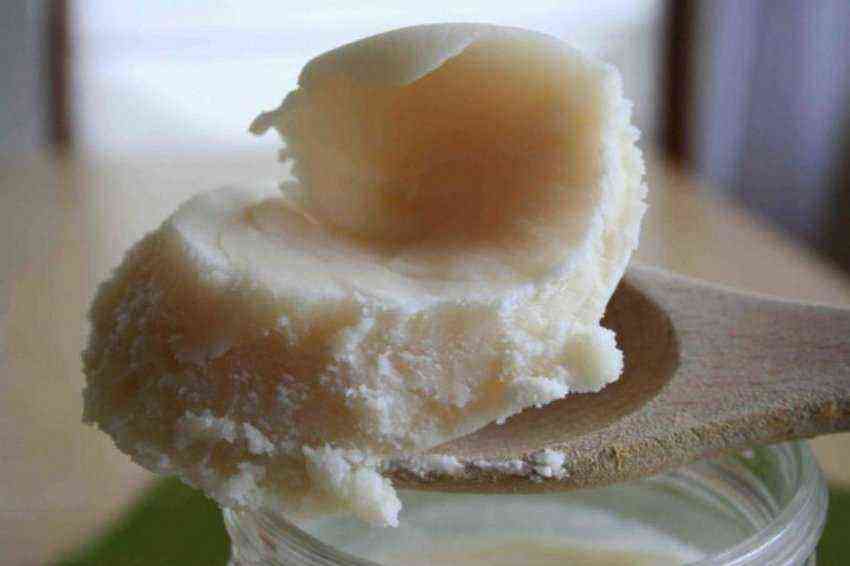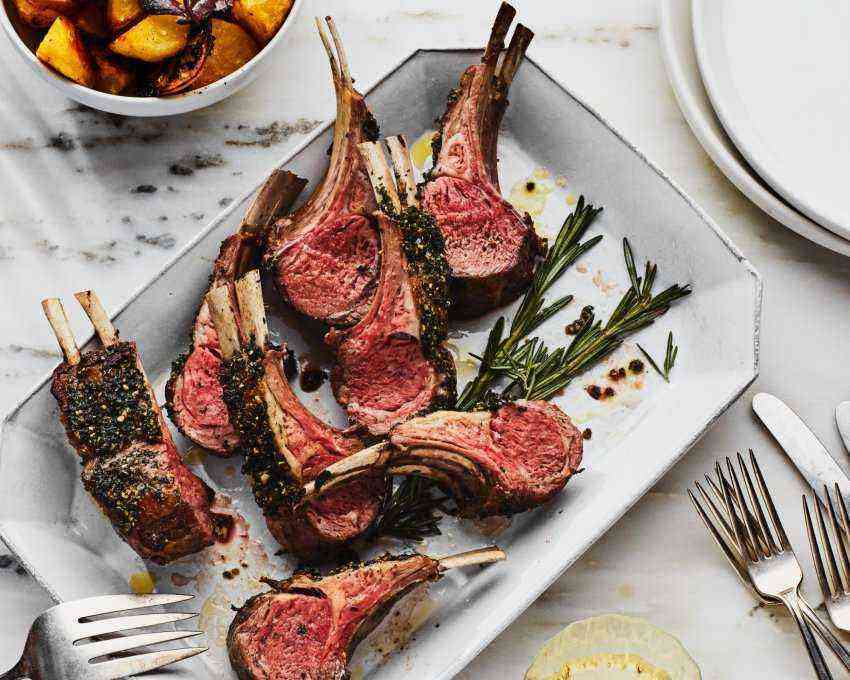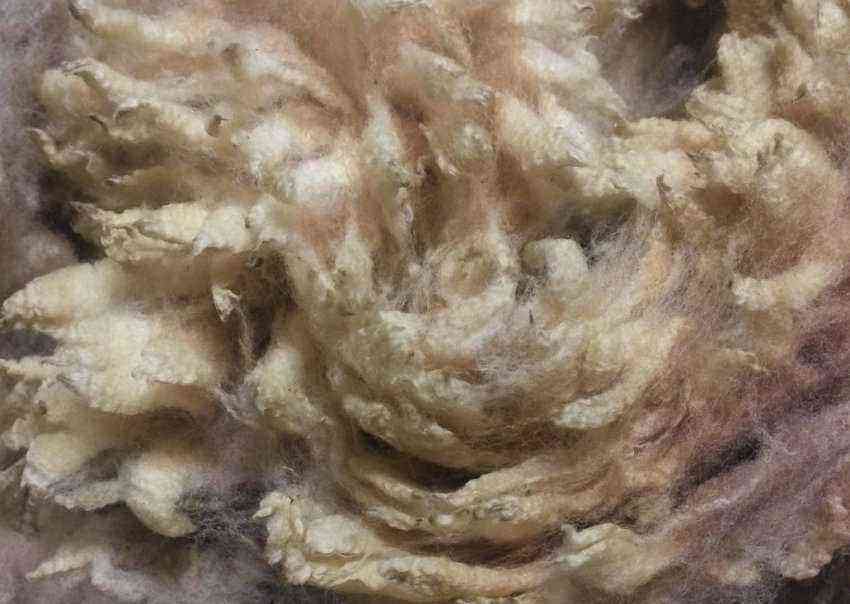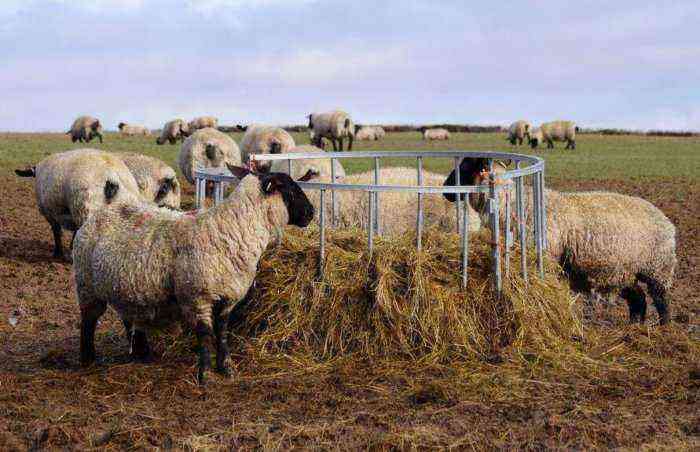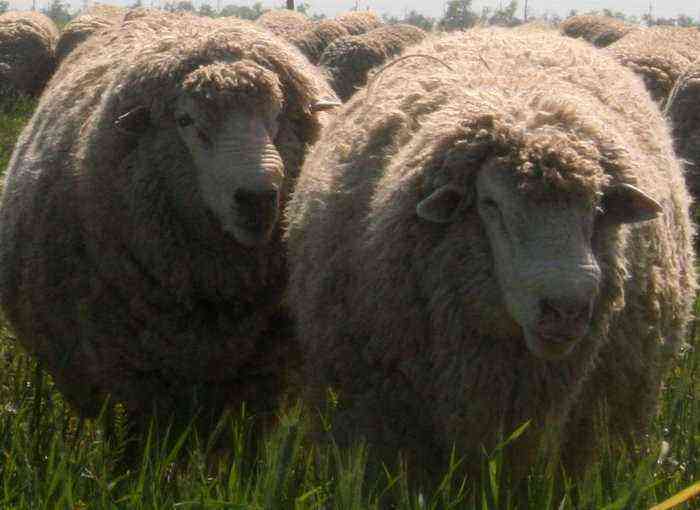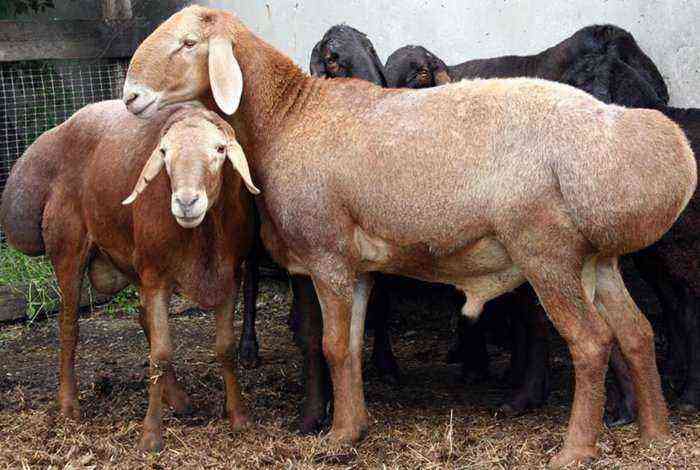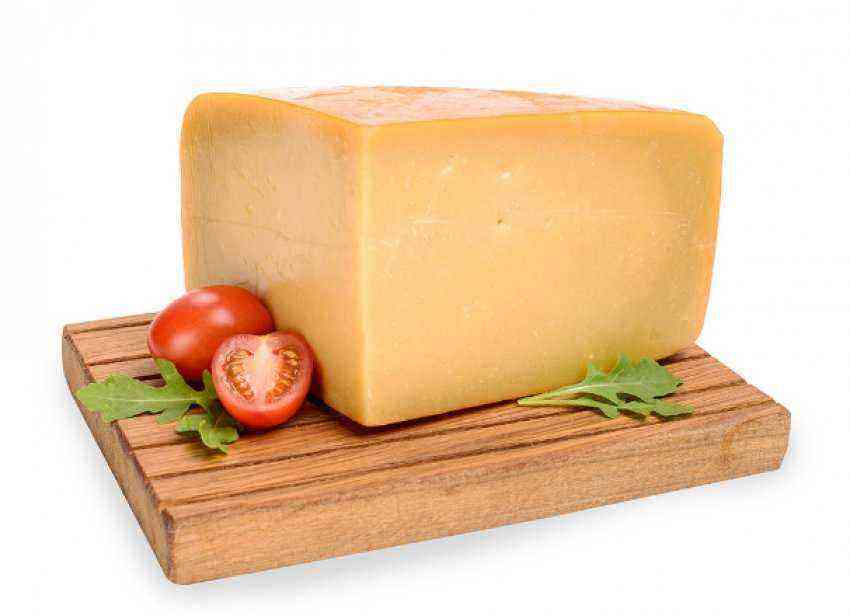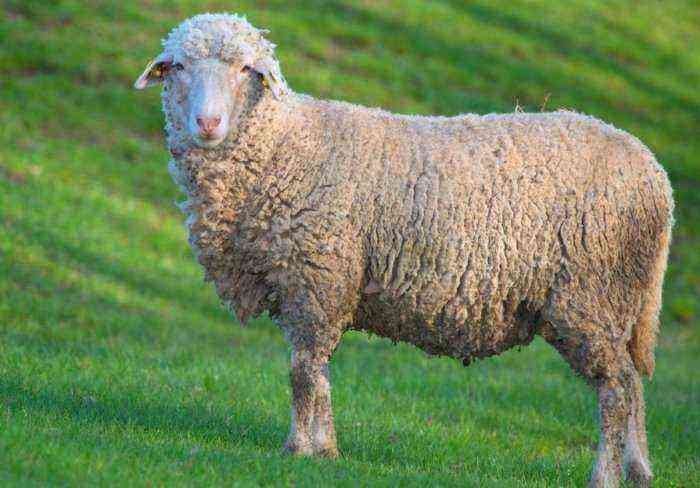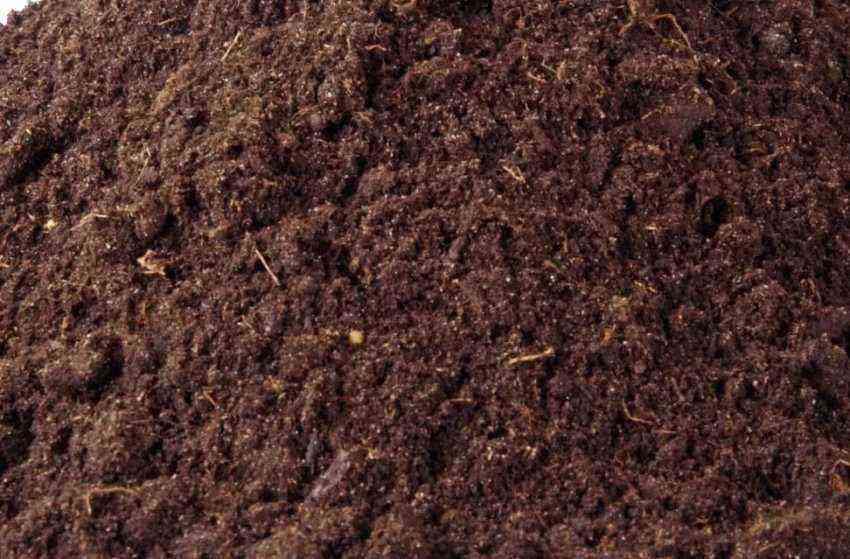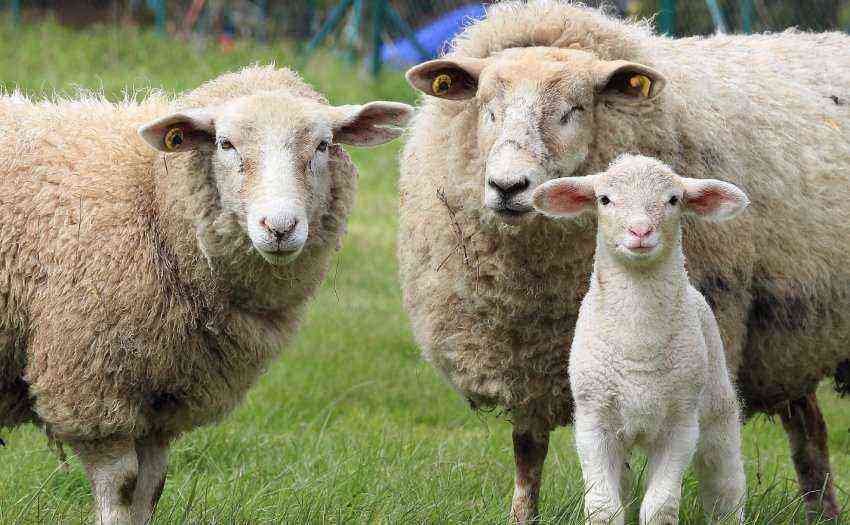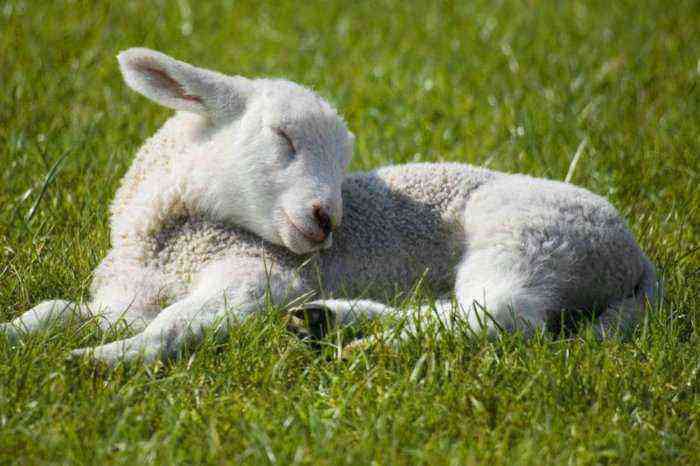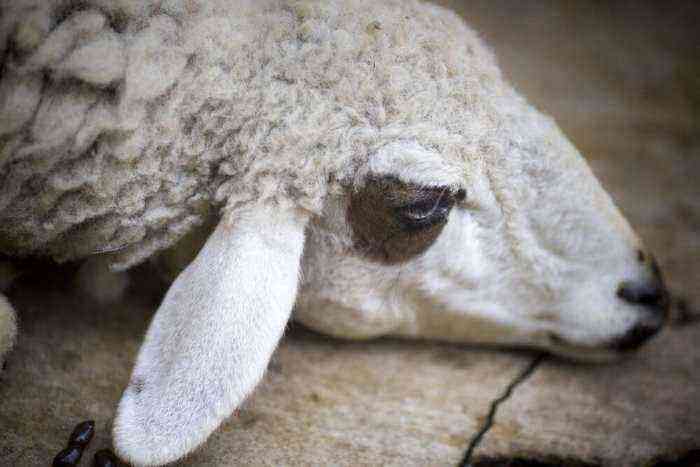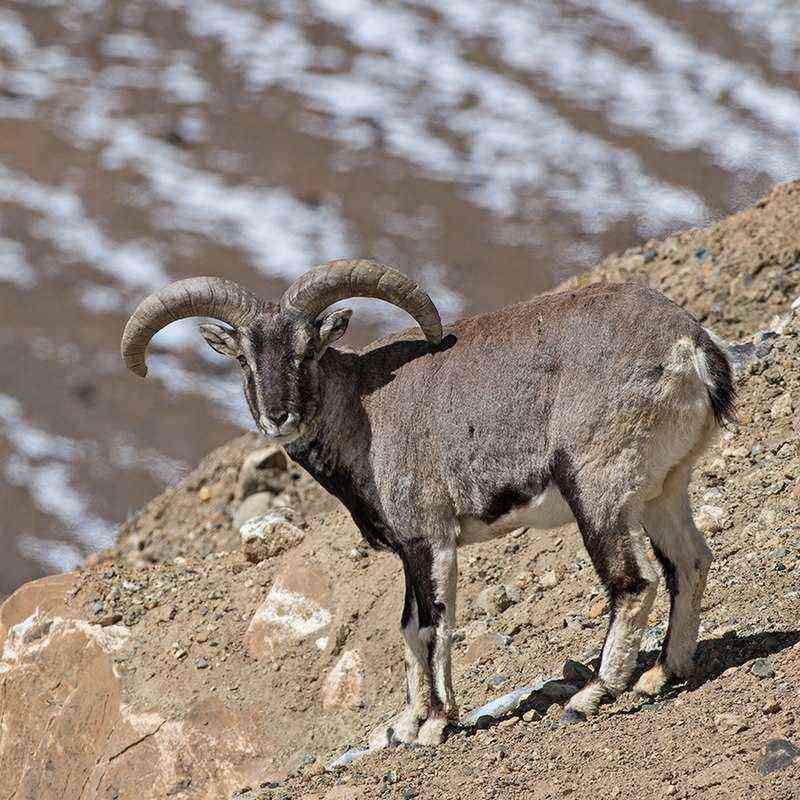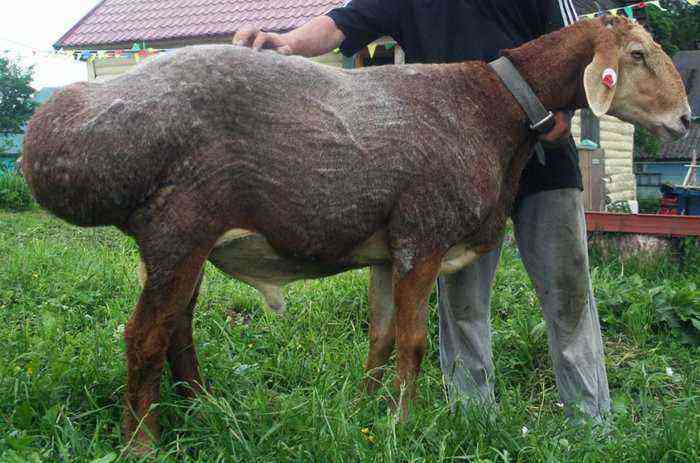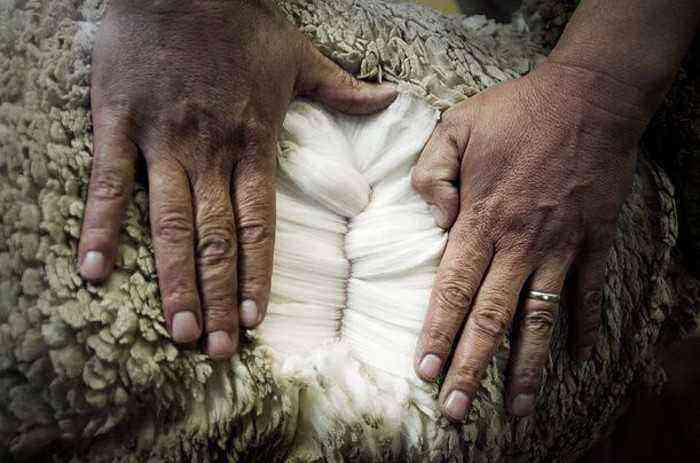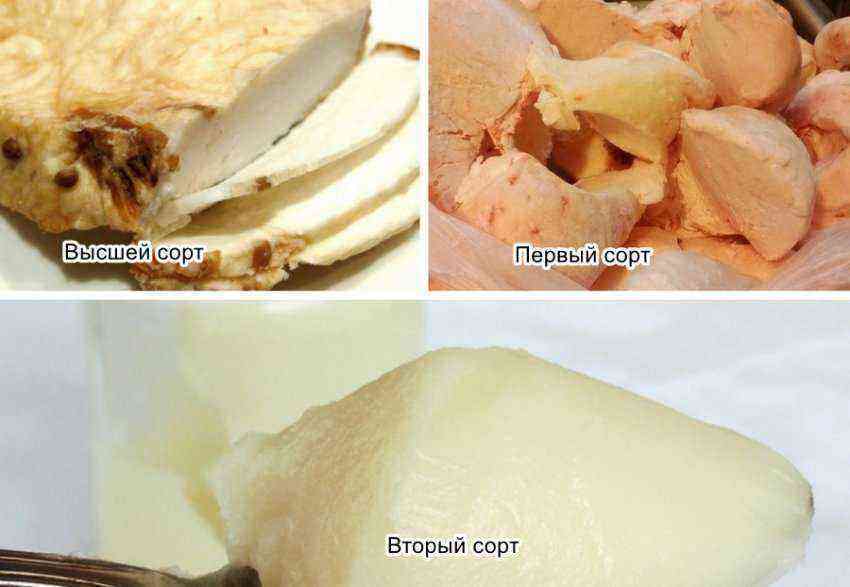Dorper sheep will be of interest to those farmers who wish to breed these animals in order to obtain a large amount of tasty meat, since this variety belongs specifically to the meat direction. But what kind of indicators should be expected from such sheep and what you should know about their cultivation in a private household – read in this article.
The African origin of dorpers does not in the least prevent them from breeding them in Europe and Russia, after all, despite the absence of a warm fur covering of the body, animals perfectly adapt even to sub-zero temperaturesthat scientists still cannot explain scientifically. In addition, sheep have many other interesting features that are directly related to their origin.
History of the breed
The reason for the emergence of a new breed of sheep in the Republic of South Africa in the 30s of the last century was the high demand for dietary meat, and given the small amount of greenery for grazing existing animals, farmers needed a new meat and unpretentious breed in growing, which would be enough local meager fodder. To achieve this goal, sheep of several existing breeds were selected: Dorset Horn, Persian blackhead and fat-tailed sheep.
Each of them had a good set of positive qualities that should have been beneficially combined in a new animal, which eventually happened. The young growth of the new breed is actively growing and developing, quickly gaining weight even in the hot conditions of the African savannah, and a one- or two-day lack of water does not affect the health of these animals. Dorpers came to Europe only thirty years later (in 1966), but due to their unpretentiousness they quickly spread to various countries.
Did you know? The breeders did not think about the name of the specified breed of sheep for a long time and simply combined the names of the parental forms: the first syllable from “dorsethorn”, and the second from “Persian black-headed”. By the way, from the latter, the animal inherited not only the letters of the name, but also a very spectacular color.
A few years later, farmers in America and Australia appreciated their qualities, and already in the XNUMXst century, the Dorper breed began to be actively bred in Canada, Russia and other similar climatic regions of the globe. It is noteworthy that keeping sheep in unheated pens during the cold season will not cause serious problems with their health.
The main characteristics of the breed
The most visible characteristics of any breed of animal are the conformation data, however, from the point of view of farmers, it is much more important to learn about the productive qualities, as well as the general advantages and disadvantages of the representatives of the selected breed variety.
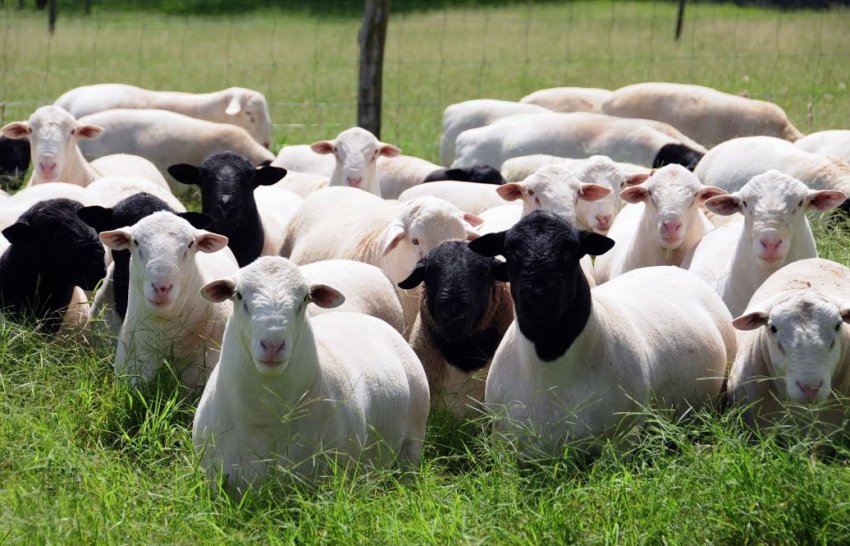
Appearance and description
All representatives of dorpers are large, harmoniously built animals with a massive and slightly elongated body. Muscles are clearly visible on the hips and back of the back, which is largely due to the short and sparse coat (for the most part it consists of outer hair and undercoat). Coat color varies from white to light gray or even black., but the color palette, as well as hairiness, can be uneven: the neck, chest and saddle of sheep are overgrown thicker, but there is practically no hair on the stomach. The skin on the legs, torso and neck is white, but on the head and in the area of the upper neck it is black and often folded. Legs are always short and bare.
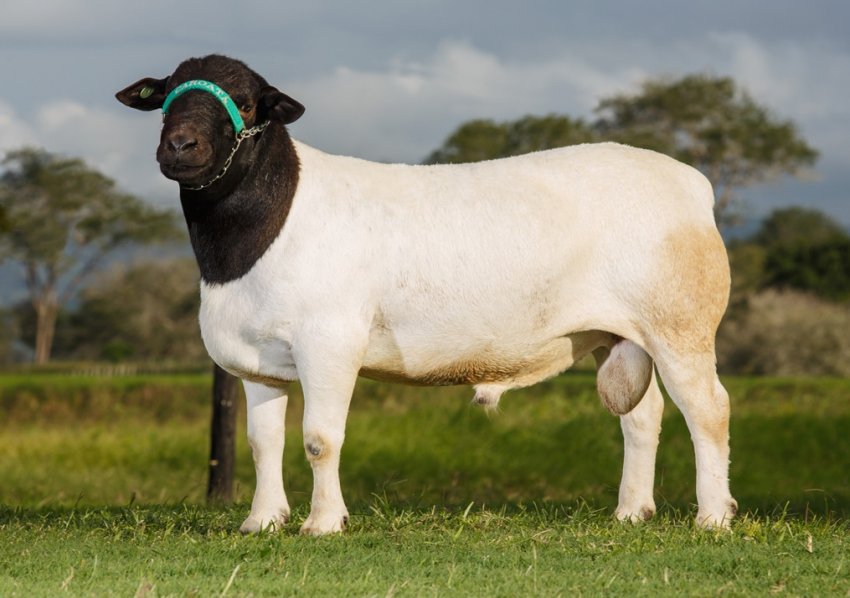
In females, horns are completely absent, in rams they rarely grow and usually are two or three centimeter tubercles. On the forehead of males, wool is curled in the manner of a scribble, and in sheep this addition is weakly expressed, or not at all. There are two main subspecies of dorpers: the former have a black head, with the same dark upper part, neck, and the latter are pure white and have no dark color at the genetic level. Small sheep in color completely repeat the appearance of adult representatives, resembling their reduced copy.
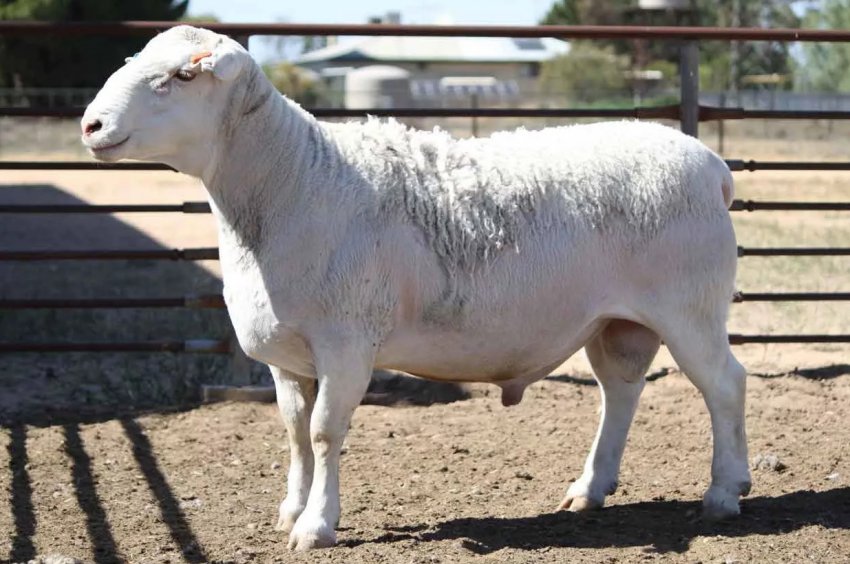
The life expectancy of Dorper sheep is no more than 15 years., but after 5–8 years of maintenance, it ceases to be justified: animals no longer gain weight. While in representatives of other breeds of sheep, body weight depends on the quality of nutrition, Dorper sheep quickly gain weight even on poor feed, often reaching up to 90–95 kg. Individual sheep can “grow” up to 130-140 kg, but this is more the exception than the rule.
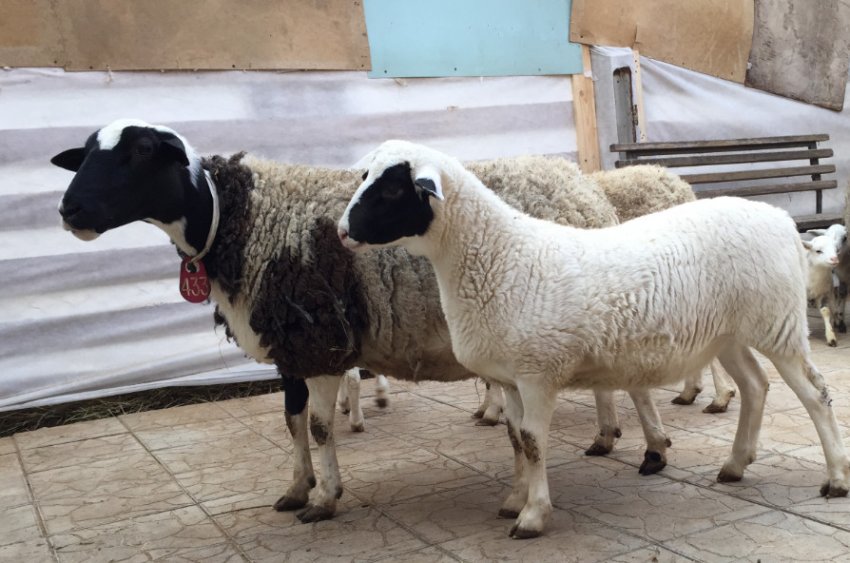
Upon reaching one month, young animals already weigh about 12 kg, and especially well-fed – 25 kg. If we compare them with other lambs, then they are 2-3 times ahead of them in development. By the age of two months, the weight of the lamb reaches 40 kg, and at four months, small burly men weigh about 55 kg. By the age of nine months, young males often reach 70 kg, due to which they are often sought to be crossed with smaller females of other breeds. The good palatability of the meat, combined with a high rate of muscle building, can be seen as early as the second generation of these lambs.
Productivity
The taste properties of sheep meat are at a high level and it is considered dietary. From a well-fed ram, the meat yield is at the level of 59% of the total weight of the animal. Fat in the muscle layer is distributed evenly, and not in thick plates as in other varieties of lamb. Thanks to this feature, the muscular texture stands out against the background of other breeds – it is devoid of sharp-smelling layers of yellowish fat.

In addition, the meat of representatives of this breed does not have a specific “mutton” taste, and the level of cholesterol in such products is minimized, so it is recommended to use it for children and people suffering from problems with the digestive system or cardiovascular ailments.
Advantages and disadvantages of the breed
Like other sheep breeds, Dorper has its advantages and disadvantages, although the latter are not so significant.
- The main advantages of keeping animals include:
- unpretentiousness to living conditions and care;
- high taste properties of meat;
- ease and speed of reproduction of sheep;
- standard multiplicity of females (one individual brings from two to five lambs per offspring);
- good immunity and rapid growth of young animals;
- early puberty of sheep (about eight months for females and five for lambs);
- good resistance to helminths and skin parasites, which eliminates the need for frequent deworming of young animals and adults (this characteristic is fixed in animals at the genetic level).
Did you know? According to approximate estimates of scientists, the first sheep on Earth appeared about 6-7 thousand years ago, and they began to spread around the globe from the territory of Turkey.
- Among the shortcomings of the breed, the most noticeable are:
- relatively high cost of animals;
- the impossibility of keeping on elevated places (because of their love for heights, they often fall from the upper tiers, haylofts, etc.).
In addition, some farmers attribute short hair and low milk yield to the minuses, but, by and large, sheep can only be used in a narrow direction – for meat.
Care
Each owner is interested in the rapid weight gain of his sheep, so a properly balanced diet is considered one of the most important aspects of animal care. In the summer, sheep are usually fed twice a day: morning and evening, and during the day they themselves find everything they need on the pastures (you can add only root crops or concentrated feed). In the winter season, the diet of animals changes somewhat and the number of feedings increases up to 3-4 times a day.
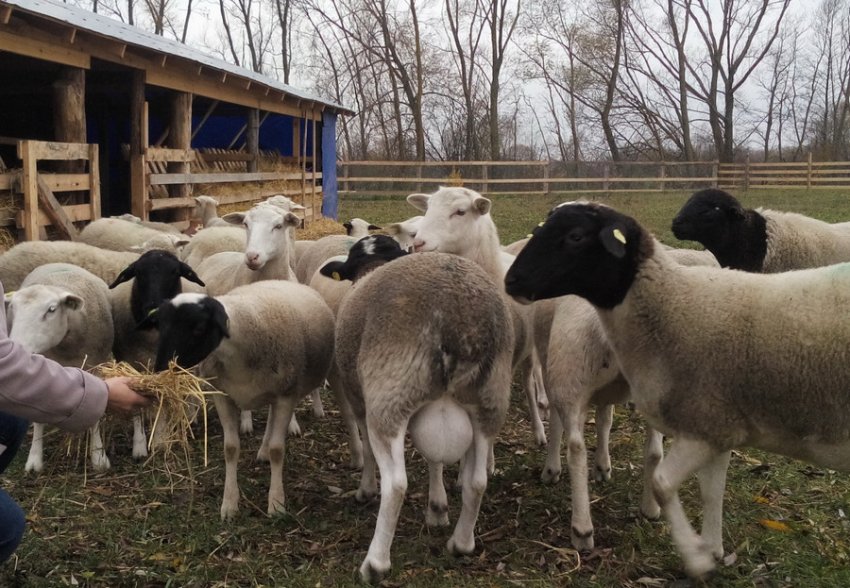
In this case, the basis of the daily diet are hay and straw, grain, bran, silage and root crops, which are usually harvested for feeding animals in the cold season. An alternative option for nutrient mixtures are cereals from a mixture of different cereals, peeling vegetables. It is useful to lay out lumps of salt in stalls (or in one specific place), from which your wards can get all the minerals they need in the process of licking. This is especially important for pregnant females, as they are always deficient in nutrients and vitamins.
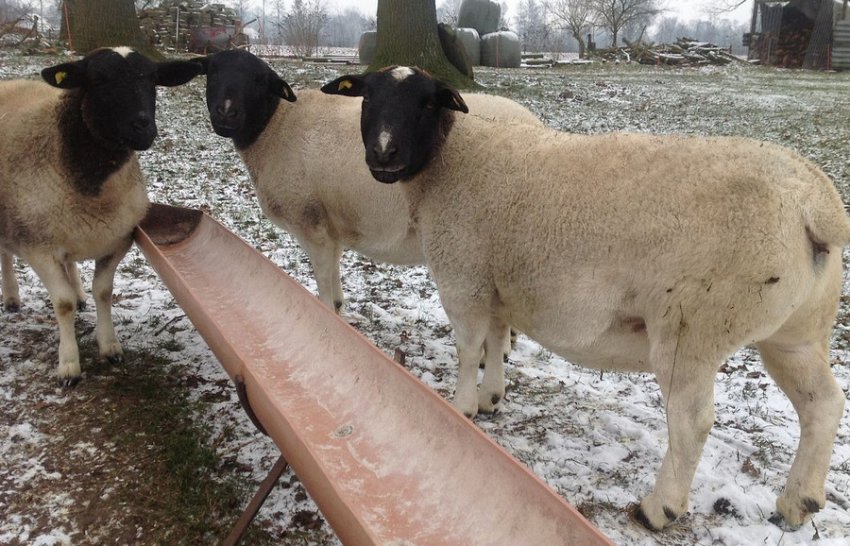
As for drinking, water should be in the stalls at all times, moreover, if the pasture is far from the premises, then drinkers should be placed there as well.
Despite the good immunity of dorpers, one should not exclude the possibility of developing one of the common diseases, such as foot and mouth disease, brucellosis, infectious mastitis, and smallpox. In addition, sometimes there are cases of rabies infection, especially if the lambs are grazing close to the forest belt.
Important! In winter, it is better to heat the water, because sheep can catch a cold due to the use of cold liquid.
The main reason for almost any problems is the lack of attention of the owner to the livestock and ignoring the rules of hygiene, in particular, when cleaning the permanent dwelling of animals. For example, due to untimely cleaning of manure, they may develop hoof rot, not to mention the possible fractures or dislocations of the limbs with an inconvenient layout of the stall design. In case of any violation in the behavior of a particular individual, it must be immediately isolated from the rest of the livestock and shown to a veterinarian.
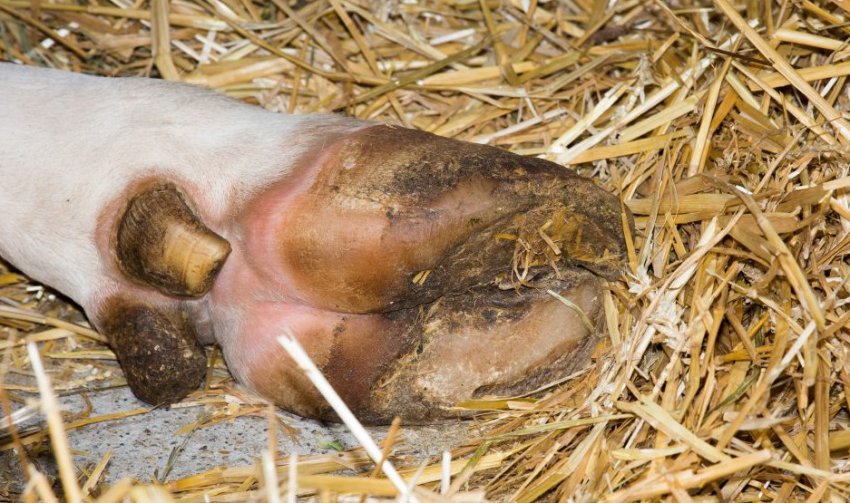
Reproduction
Due to the multiple pregnancy of females with the reproduction of dorpers, there are no difficulties, Moreover, sheep themselves do an excellent job with labor and rarely require human intervention.
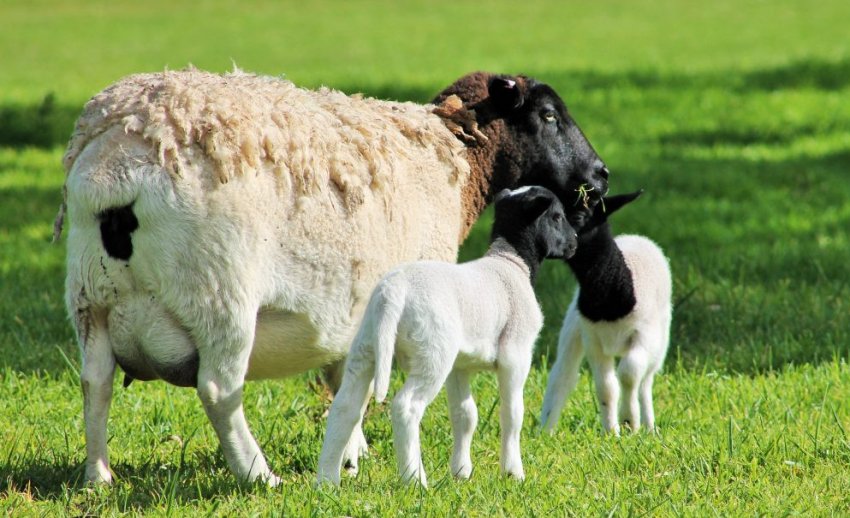
Much more important is proper postpartum care for lambs and their further rearing. with the obligatory consideration of the characteristics of the diet. In any case, in order to exclude possible problems, it is worth carefully studying each of these processes.
lambing
In the historical homeland of Dorper sheep, free mating of individuals is practiced, and upon reaching puberty, individual members of the herd find partners for themselves. The gestation period of a sheep lasts for 140–150 days, after which two to five lambs are born, weighing 2–5 kg each.
Important! Problems with the amount of milk are more often observed in older individuals, after the age of eight. If such females give birth to a large number of lambs, then be prepared for artificial feeding.
The small head and fragile structure of the skeleton of the newborn allows him to pass through the birth canal without hindrance, and if there are no health problems, a small sheep will show increased activity in 10 minutes, constantly being close to the mother. If, after half an hour, the baby did not get up and did not get drunk on the mother’s colostrum, then after a maximum of two hours the uterus will have to be milked and the lamb will be artificially watered (in an hour he should drink at least 50 ml of colostrum).
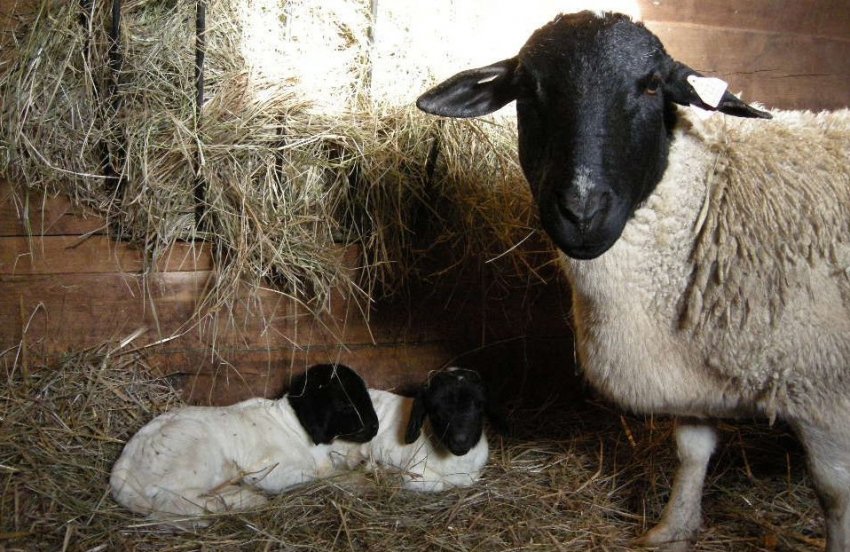
Females are always very caring, and they usually have enough milk for the normal feeding of all born cubs. You can make sure that the young are in good health through regular observation: if up to the age of five days the cubs sleep more, and wake up only to eat, then everything is in order with them and they are quite full.
Raising lambs
It is best to grow small dorpers with the joint method when they are in the mother pen until the age of two weeks, and the queens graze freely in the pasture, returning to their offspring every three hours to feed.
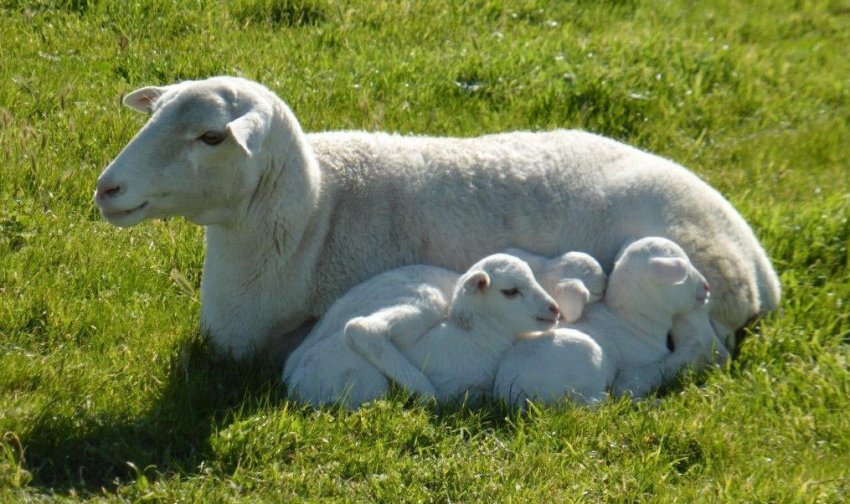
Under such conditions, the mass of lambs increases rapidly and at 1 month they weigh 3-4 times more than at birth. Until the age of three months, feeding with mother’s milk is mandatory for them, after which the young can be taken away from the uterus and transferred to a separate pen.
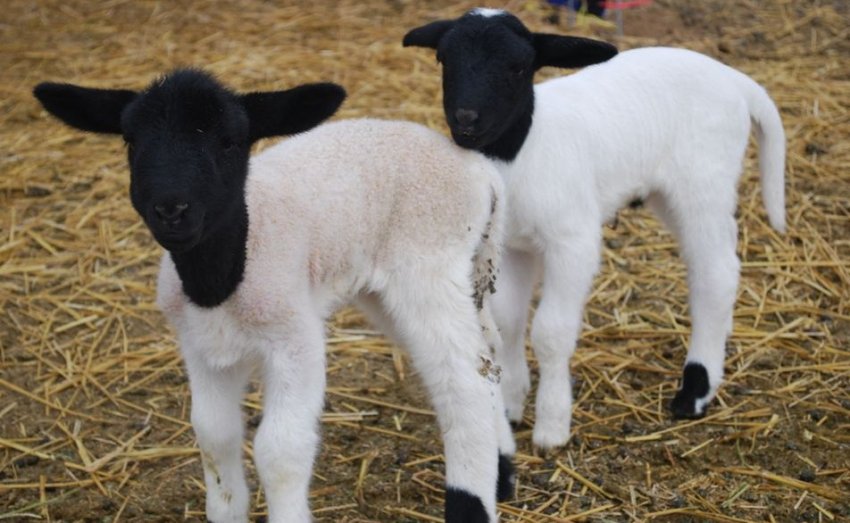
Due to the good adaptability of dorpers to a dry and hot climate with a limited amount of vegetation, even young individuals have enough of this food and they do not need grain during fattening. But with a limited amount of hay, switching to grains is still possible, but this is highly undesirable if you only need quality lamb (meat can change its taste).
Breeding area
Purebred Dorper sheep are rarely found in Russia, since the high cost of young animals often scares off modern farmers. Adult breeding rams can cost around $6000, while young ones can cost as much as $1500. For this reason, biomaterial or sheep embryos are more often imported into the country, which is important not only for the Russian Federation, but also for Canada, Australia and the USA, where the described breed is quite popular.

In general, such sheep are found in various countries, because they are equally well adapted to both the hot conditions of their native Africa and the frosty winters of the northern regions. If you believe the reviews of breeders, then a standard non-insulated corral as a shelter, when growing dorpers in the middle zone, will be more than enough, and if you add to this the low demands on feed, you get an almost ideal animal for breeding.
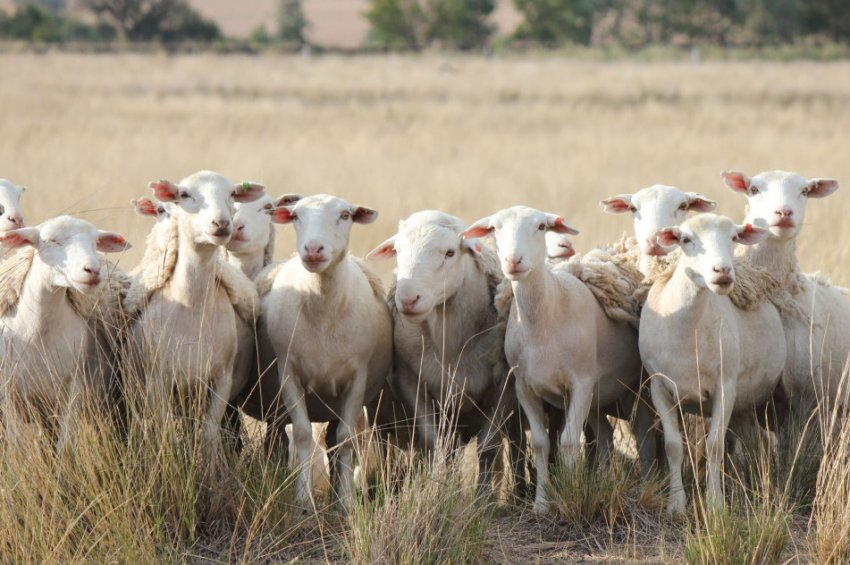
Dorpers are ideal for those farmers who appreciate the high dietary properties of lamb and cannot afford to spend a lot of time caring for livestock: with a minimum of labor, you will always get enough meat products.
Reviews
Hello. Dorper is a good meat breed. From an American point of view (the point is located precisely in the state of Texas). I, with your permission, will name two more breeds. .The first is Bleu du Maine. A wonderful breed, wool of the highest quality. The weight of a sheep reaches 120 kg, the weight of a ram is 180. Well, the second is Border Leicester, a serious breed. At 21 weeks, it can gain weight more than 70 kg. Again, wool. Meat of excellent quality. Can be safely used to improve other breeds.
Karpov
https://fermer.ru/comment/121131#comment-121131
